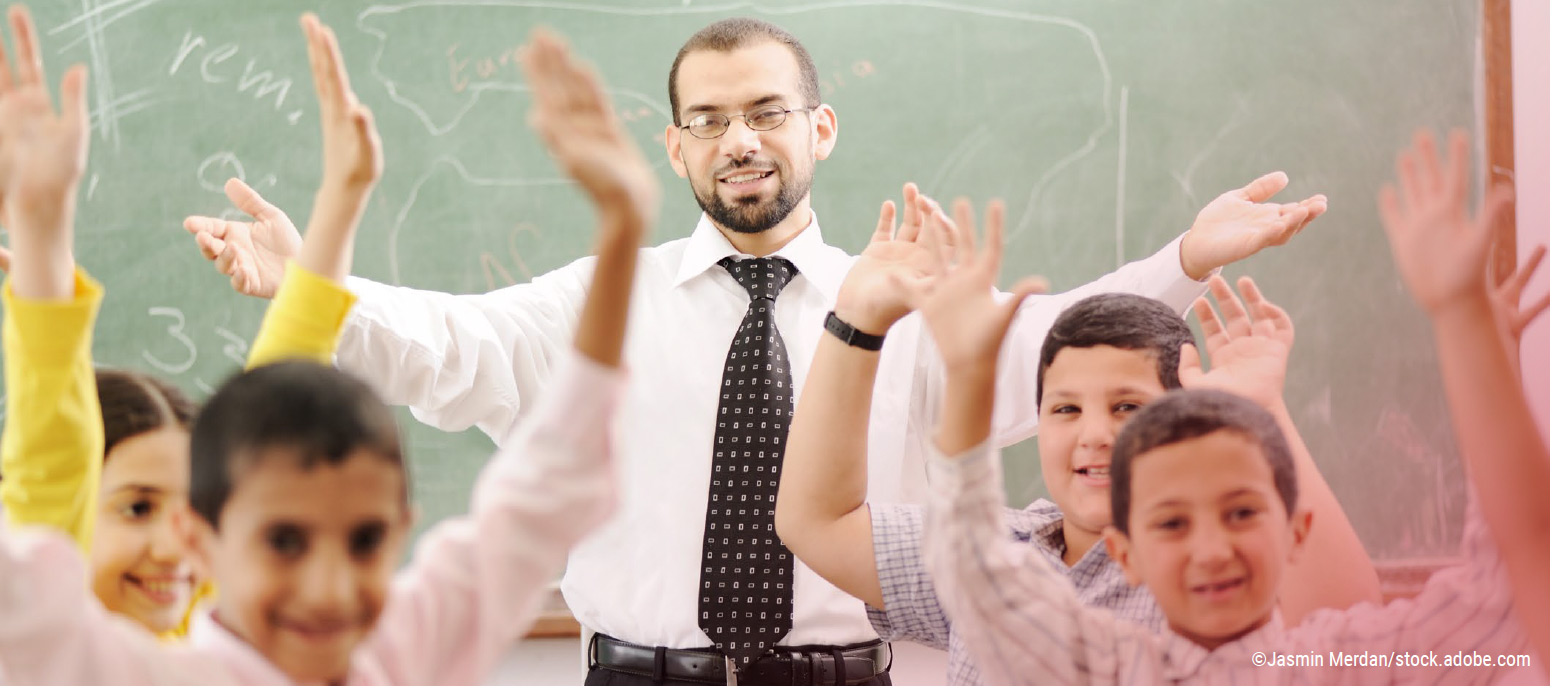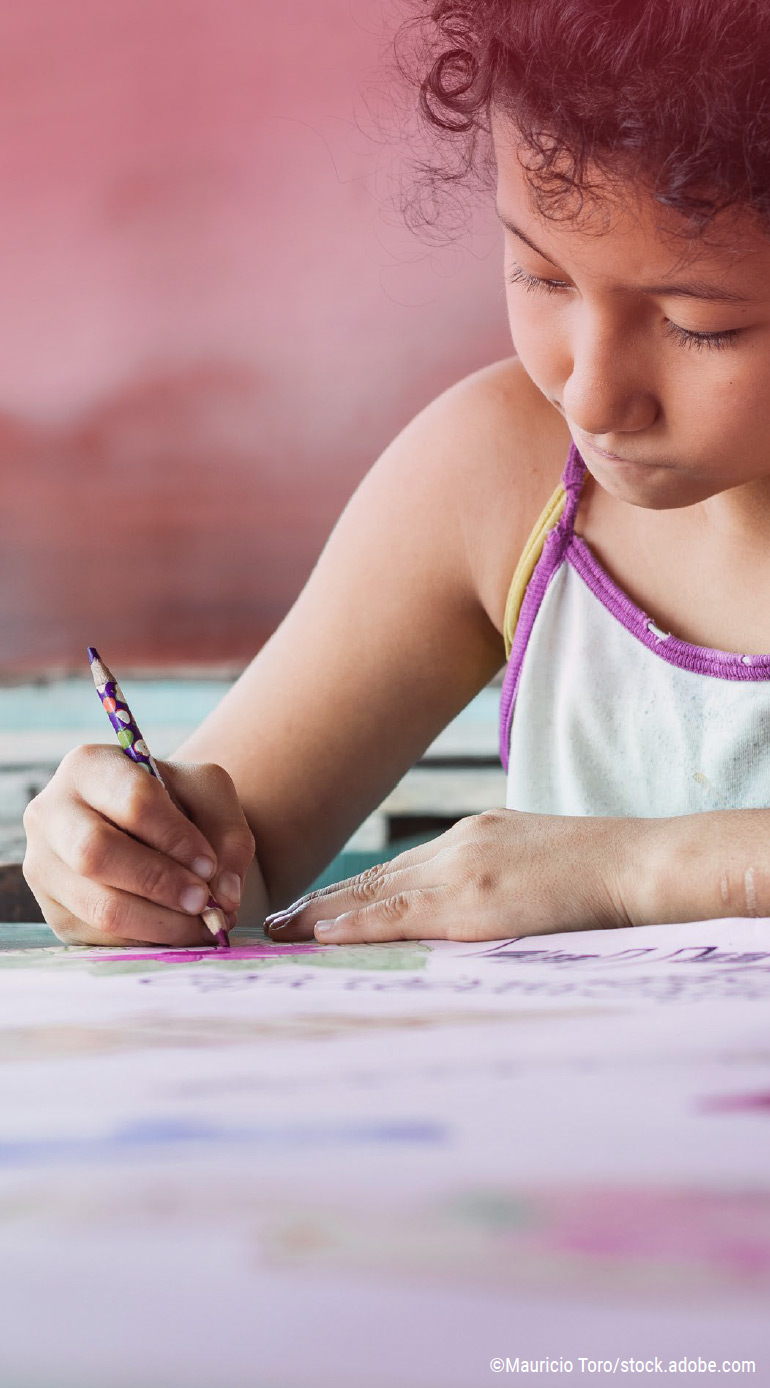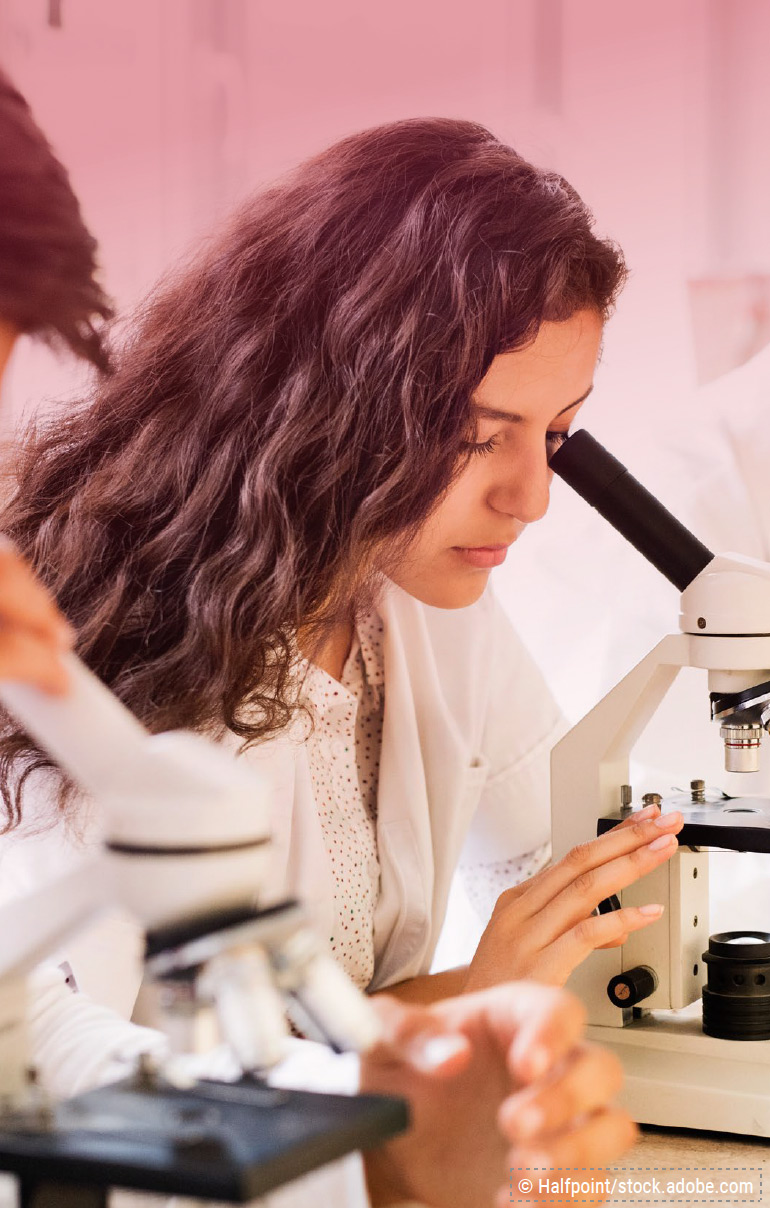Arab countries have progressively expanded access to schooling and reduced gender gaps in education since 2000. Inequalities and uneven quality in instruction, however, continue to hinder progress on the SDGs and impact students from all walks of life. Many education systems struggle to adequately serve poor students, rural communities, girls and women, refugees, internally displaced persons and persons with disabilities, thereby deepening inequalities and constraining social and economic development.
To get on track to achieve SDG 4, Arab countries need holistic, clear and well-resourced policies to improve the quality and relevance of learning outcomes through curriculum reforms at all stages of education. Policies to enhance critical thinking and skills acquisition are required to achieve SDG 4 and equip students for success in school, work and life, based on foundational literacy and numeracy, problem-solving, technical and vocational competencies, and other key life skills.
Available SDG 4 data present a mixed picture of regional progress in ensuring a quality education for all.



 Nearly all countries have established the legal right to education, with public provision of free and compulsory schooling. Nineteen
Arab country constitutions identify education as a State responsibility, although not all frame this obligation in terms of rights. Compulsory schooling requirements range from 6 years in the Comoros and Iraq to 12 years in Egypt and the United Arab Emirates.3
Nearly all countries have established the legal right to education, with public provision of free and compulsory schooling. Nineteen
Arab country constitutions identify education as a State responsibility, although not all frame this obligation in terms of rights. Compulsory schooling requirements range from 6 years in the Comoros and Iraq to 12 years in Egypt and the United Arab Emirates.3
 To improve the quality of education, countries have reformed curricula and increased teacher qualifications. A recent analysis of 18 national education plans in the Arab region4 found that 15 plans include an emphasis on improving the quality of instruction, and 17 plans contain provisions for improving teacher qualifications and skills, expanding professional development opportunities for instructors or reducing pupil-to-teacher ratios. Curriculum reforms have encompassed a range of measures to strengthen learning outcomes, such as unifying national standards, emphasizing subjects deemed important for student success
(such as science and technology, with fewer reforms targeting fields in
the humanities and the arts), and introducing a focus on important life skills such as creativity and problem solving. Tools such as qualification frameworks have been used to strengthen the consistency of education quality and student outcomes.
To improve the quality of education, countries have reformed curricula and increased teacher qualifications. A recent analysis of 18 national education plans in the Arab region4 found that 15 plans include an emphasis on improving the quality of instruction, and 17 plans contain provisions for improving teacher qualifications and skills, expanding professional development opportunities for instructors or reducing pupil-to-teacher ratios. Curriculum reforms have encompassed a range of measures to strengthen learning outcomes, such as unifying national standards, emphasizing subjects deemed important for student success
(such as science and technology, with fewer reforms targeting fields in
the humanities and the arts), and introducing a focus on important life skills such as creativity and problem solving. Tools such as qualification frameworks have been used to strengthen the consistency of education quality and student outcomes.
 Countries have increased the use of technology in education.
A growing emphasis on technological literacy and science, technology, engineering and mathematics (STEM) education is part of an effort to ensure that students are adequately equipped with skills to succeed in the twenty-first century economy. Accordingly, many countries are introducing new programmes in STEM disciplines, dedicating more time to these subjects in the ordinary curriculum, and strengthening technical and vocational institutions specialized in such topics. This increased focus
on technology has included the expansion of e-learning programmes and tools to improve the flexibility, reach and resilience of education systems, a process accelerated during the COVID-19 pandemic. Efforts to implement such solutions are vulnerable to the risks posed by persistent digital divides, however. The shift to e-learning during the pandemic allowed learning continuity but left millions of students behind. An estimated 40 per cent of students in the Middle East and North Africa were unable to take advantage of distance education programmes due to the unavailability of programming or a lack of tools to access alternative learning modalities (for example, electricity, Internet or a home computer).5 This experience illustrates the importance of further investment in digital infrastructure to strengthen the resilience of education systems to crisis. For further analysis of the risks of digital divides, see the chapter on SDG 17.
Countries have increased the use of technology in education.
A growing emphasis on technological literacy and science, technology, engineering and mathematics (STEM) education is part of an effort to ensure that students are adequately equipped with skills to succeed in the twenty-first century economy. Accordingly, many countries are introducing new programmes in STEM disciplines, dedicating more time to these subjects in the ordinary curriculum, and strengthening technical and vocational institutions specialized in such topics. This increased focus
on technology has included the expansion of e-learning programmes and tools to improve the flexibility, reach and resilience of education systems, a process accelerated during the COVID-19 pandemic. Efforts to implement such solutions are vulnerable to the risks posed by persistent digital divides, however. The shift to e-learning during the pandemic allowed learning continuity but left millions of students behind. An estimated 40 per cent of students in the Middle East and North Africa were unable to take advantage of distance education programmes due to the unavailability of programming or a lack of tools to access alternative learning modalities (for example, electricity, Internet or a home computer).5 This experience illustrates the importance of further investment in digital infrastructure to strengthen the resilience of education systems to crisis. For further analysis of the risks of digital divides, see the chapter on SDG 17.
 Gender equality and disability inclusion in education are priorities in most countries, but inequalities persist. At the regional level, the gross gender enrolment gap for primary and secondary education fell from 12 to 5 per cent between 2000 and 2020, representing major progress, although the disparity is still higher than the global average of 1 per cent.6 Despite progress in expanding girls’ enrolment in schools, sociocultural norms continue to hinder their access to education. Gaps widen at higher levels of education, particularly affecting rural and poor women and girls. Threats to girls’ education often include parents prioritizing male children’s eventual economic prospects, a lack of female teachers, safety concerns around travelling to school and early marriage. These problems are most severe in countries experiencing conflict, where girls are 2.5 times more likely to be out of school than boys.7
Gender equality and disability inclusion in education are priorities in most countries, but inequalities persist. At the regional level, the gross gender enrolment gap for primary and secondary education fell from 12 to 5 per cent between 2000 and 2020, representing major progress, although the disparity is still higher than the global average of 1 per cent.6 Despite progress in expanding girls’ enrolment in schools, sociocultural norms continue to hinder their access to education. Gaps widen at higher levels of education, particularly affecting rural and poor women and girls. Threats to girls’ education often include parents prioritizing male children’s eventual economic prospects, a lack of female teachers, safety concerns around travelling to school and early marriage. These problems are most severe in countries experiencing conflict, where girls are 2.5 times more likely to be out of school than boys.7

 Countries are increasing attention to early childhood education. Although the rate of participation has
risen rapidly to 46.1 per cent, the region continues to underperform compared to others. Examples of the prioritization of early childhood education include:
Countries are increasing attention to early childhood education. Although the rate of participation has
risen rapidly to 46.1 per cent, the region continues to underperform compared to others. Examples of the prioritization of early childhood education include:
 The development of a pre-primary curriculum in Palestine.
The development of a pre-primary curriculum in Palestine.  The establishment of dedicated departments within the ministry of education in Qatar and the United Arab Emirates.
The establishment of dedicated departments within the ministry of education in Qatar and the United Arab Emirates. trategies to encourage enrolment in Jordan, Kuwait, Morocco, the Sudan and Tunisia.
trategies to encourage enrolment in Jordan, Kuwait, Morocco, the Sudan and Tunisia.Pre-primary education is not compulsory in any Arab country, however. Only Algeria offers a year of pre-primary education free of charge.10 The lack of freely available early childhood education is a significant barrier to access, particularly in areas with high rates of poverty.
 Higher education is a policy focus, with an emphasis on both the accessibility and quality of learning. In several Arab countries, access to public universities is free or nearly free of charge for national students. Governments offer a range of scholarships and housing and meal stipends to support students in accessing post-secondary education. Higher education systems are diversifying through public and private, technical and transnational university offerings in a number of countries.
Higher education is a policy focus, with an emphasis on both the accessibility and quality of learning. In several Arab countries, access to public universities is free or nearly free of charge for national students. Governments offer a range of scholarships and housing and meal stipends to support students in accessing post-secondary education. Higher education systems are diversifying through public and private, technical and transnational university offerings in a number of countries. Many countries have responded to persistently high youth unemployment rates with a focus on technical and vocational education and training (TVET) and partnerships with the private sector, seeking to ensure that skills acquired in school match employers’ needs. Such policies can play a major role in facilitating learning-to-earning transitions that enable young graduates to obtain decent work, and in reducing the sizeable population of youth who are not in education, employment or training (NEET). In 2022, 30.7 per cent of all youth and 42.9 per cent of female youth in the region were in the NEET category, underscoring the urgent need to ensure opportunities for young people (for additional information, see the chapter on SDG 8).
Many countries have responded to persistently high youth unemployment rates with a focus on technical and vocational education and training (TVET) and partnerships with the private sector, seeking to ensure that skills acquired in school match employers’ needs. Such policies can play a major role in facilitating learning-to-earning transitions that enable young graduates to obtain decent work, and in reducing the sizeable population of youth who are not in education, employment or training (NEET). In 2022, 30.7 per cent of all youth and 42.9 per cent of female youth in the region were in the NEET category, underscoring the urgent need to ensure opportunities for young people (for additional information, see the chapter on SDG 8).Initiatives to improve alignment between TVET educational outcomes and labour market needs also encompass national qualifications frameworks to ensure consistent learning outcomes for graduates. Seven countries (Bahrain, Jordan, Morocco, Oman, Saudi Arabia, Tunisia and the United Arab Emirates) have adopted these frameworks, and another seven (Algeria, Egypt, Iraq, Qatar, Lebanon, the State of Palestine and the Sudan) are at various stages of developing them. Governments have endeavoured to improve such systems in collaboration with the private sector to boost student employability.14
 Non-formal education is an increasingly significant part of the region’s educational landscape.
This refers to structured programming outside the formal educational system that is organized by an educational provider, which might be a non-governmental organization, private organization or community group. Non-formal education can complement formal education by offering opportunities to develop professional and life skills. Within the region, a growing share of people use such programmes. A survey of seven countries has found that the most popular offerings are those seen as improving employment prospects, including languages, computer skills and mathematics.15 Other non-formal education programmes launched with State support include courses in communities to combat adult illiteracy. Examples of such programmes are common in the region, and are mentioned in the Voluntary National Reviews of Algeria, Iraq, Jordan, Mauritania, Morocco, Saudi Arabia and Tunisia. Religious institutions play a significant role in delivery, frequently supporting literacy education and sometimes offering instruction in other subjects.
Non-formal education is an increasingly significant part of the region’s educational landscape.
This refers to structured programming outside the formal educational system that is organized by an educational provider, which might be a non-governmental organization, private organization or community group. Non-formal education can complement formal education by offering opportunities to develop professional and life skills. Within the region, a growing share of people use such programmes. A survey of seven countries has found that the most popular offerings are those seen as improving employment prospects, including languages, computer skills and mathematics.15 Other non-formal education programmes launched with State support include courses in communities to combat adult illiteracy. Examples of such programmes are common in the region, and are mentioned in the Voluntary National Reviews of Algeria, Iraq, Jordan, Mauritania, Morocco, Saudi Arabia and Tunisia. Religious institutions play a significant role in delivery, frequently supporting literacy education and sometimes offering instruction in other subjects.

 Gulf Cooperation Council countries are reforming curricula and teaching methods to improve student skill acquisition and learning outcomes. In all these countries, education is central to key policy and vision documents to accelerate the nationalization of workforces and use the knowledge economy to drive economic diversification. Reforms have included the introduction or reinforcement of standards for skills-based curricula (as in Kuwait,22 Oman,23 Qatar,24 Saudi Arabia25 and the United Arab Emirates26), strengthening accountability and quality control systems (as in Kuwait, Oman, Saudi Arabia and the United Arab Emirates) and adopting new recruitment and professional development systems for teaching staff (steps taken in Kuwait, Oman, Qatar, Saudi Arabia and the United Arab Emirates).
Gulf Cooperation Council countries are reforming curricula and teaching methods to improve student skill acquisition and learning outcomes. In all these countries, education is central to key policy and vision documents to accelerate the nationalization of workforces and use the knowledge economy to drive economic diversification. Reforms have included the introduction or reinforcement of standards for skills-based curricula (as in Kuwait,22 Oman,23 Qatar,24 Saudi Arabia25 and the United Arab Emirates26), strengthening accountability and quality control systems (as in Kuwait, Oman, Saudi Arabia and the United Arab Emirates) and adopting new recruitment and professional development systems for teaching staff (steps taken in Kuwait, Oman, Qatar, Saudi Arabia and the United Arab Emirates).
 Gulf Cooperation Council countries lead in developing digital learning platforms, a trend accelerated during
the COVID-19 pandemic.
The Madrasati platform of Saudi Arabia has received international recognition as a top system for distance learning. Initiatives such as the Madrasa platform and The Digital School in the United Arab Emirates are making free e-learning resources available for students throughout the region, with an emphasis on mathematics, sciences and computer programming.
Gulf Cooperation Council countries lead in developing digital learning platforms, a trend accelerated during
the COVID-19 pandemic.
The Madrasati platform of Saudi Arabia has received international recognition as a top system for distance learning. Initiatives such as the Madrasa platform and The Digital School in the United Arab Emirates are making free e-learning resources available for students throughout the region, with an emphasis on mathematics, sciences and computer programming.

 The Gulf Cooperation Council countries have launched several initiatives to better integrate their education
sectors, particularly in higher education.
Steps include mutual recognition of credentials, the establishment
of the Arabian Gulf University, support for student and teacher exchange programmes, and joint research and development initiatives to spur innovation and strengthen cooperation among institutions of higher learning.28
The Gulf Cooperation Council countries have launched several initiatives to better integrate their education
sectors, particularly in higher education.
Steps include mutual recognition of credentials, the establishment
of the Arabian Gulf University, support for student and teacher exchange programmes, and joint research and development initiatives to spur innovation and strengthen cooperation among institutions of higher learning.28
 Migrant student education in the Gulf
Cooperation Council subregion is largely delivered
by private institutions, with varying levels of quality.
A massive migrant population constitutes an
estimated 52 per cent of the total population of these countries.29 Migrant children comprise an estimated
25 per cent of all children, with the proportion rising each year. Whereas most Gulf Cooperation Council countries charge enrolment fees or impose admission quotas that limit migrant student access to the public education system, Bahrain and Saudi Arabia offer free access to public schools for expatriate children who are able to study in Arabic and meet other requirements. In practice, most migrant children in the Gulf Cooperation Council countries attend private schools following international curricula.
Migrant student education in the Gulf
Cooperation Council subregion is largely delivered
by private institutions, with varying levels of quality.
A massive migrant population constitutes an
estimated 52 per cent of the total population of these countries.29 Migrant children comprise an estimated
25 per cent of all children, with the proportion rising each year. Whereas most Gulf Cooperation Council countries charge enrolment fees or impose admission quotas that limit migrant student access to the public education system, Bahrain and Saudi Arabia offer free access to public schools for expatriate children who are able to study in Arabic and meet other requirements. In practice, most migrant children in the Gulf Cooperation Council countries attend private schools following international curricula.
Although the Arab middle-income countries 31 have successfully increased enrolment rates and the average length of education, they face continuing challenges in improving the quality of education delivered by school systems and reducing deep inequalities in access. Rapidly growing student populations combine with high levels of youth unemployment, averaging 23 per cent and exceeding 40 per cent in some countries. These factors have driven countries to enact reforms to increase focus on learning outcomes and student employability.
 Many middle-income countries have focused
on modernizing curricula and upgrading teacher training to improve student learning outcomes.
Common objectives of curriculum reforms include increasing the emphasis on communications, creativity, critical thinking, problem solving and information and communications technology; enhancing vocational education; and developing life skills (as in the Education 2.0 policy of Egypt and the education strategy of Algeria, L’école algérienne). Jordan established the National Centre for Curricula Development in 2017 to continuously evaluate and develop educational materials to improve student learning outcomes.
Many middle-income countries have focused
on modernizing curricula and upgrading teacher training to improve student learning outcomes.
Common objectives of curriculum reforms include increasing the emphasis on communications, creativity, critical thinking, problem solving and information and communications technology; enhancing vocational education; and developing life skills (as in the Education 2.0 policy of Egypt and the education strategy of Algeria, L’école algérienne). Jordan established the National Centre for Curricula Development in 2017 to continuously evaluate and develop educational materials to improve student learning outcomes.
 Middle-income countries have introduced initiatives to extend education access to underserved regions and populations, with a focus on rural
areas and groups at risk of being left behind.
The efforts of Morocco to address urban-rural inequalities include the Écoles Communautaires programme, which creates education centres for rural students that offer qualified teaching staff, Internet access and transportation. Further support comes from
the Programme de l’impulsion du capital humain des générations montantes, which supports early childhood education in rural areas by creating places for some 15,000 children. To tackle high dropout rates, Tunisia has elaborated a “second chance” education pathway that reintegrates students into classes after a period away from school and supports those at high risk to complete their education.
Middle-income countries have introduced initiatives to extend education access to underserved regions and populations, with a focus on rural
areas and groups at risk of being left behind.
The efforts of Morocco to address urban-rural inequalities include the Écoles Communautaires programme, which creates education centres for rural students that offer qualified teaching staff, Internet access and transportation. Further support comes from
the Programme de l’impulsion du capital humain des générations montantes, which supports early childhood education in rural areas by creating places for some 15,000 children. To tackle high dropout rates, Tunisia has elaborated a “second chance” education pathway that reintegrates students into classes after a period away from school and supports those at high risk to complete their education.
 Governments are increasing efforts to align educational outcomes with labour market needs to improve youth employment prospects, including through improved TVET systems. The Assurance
Qualité
programme in Algeria measures universities according to the employment rates of their graduates, and universities increasingly have liaison offices that seek to connect students with employers. In Jordan,
a new TVET strategy has sought to encourage the development of employment-ready skills, while the sustainable development strategy of Egypt underscores the role of technical education in meeting labour market needs. In Palestine, TVET is being integrated into
the curriculum for grades 7 to 9 to provide students with stronger life skills foundations and support employability. Additionally, all middle-income countries have either adopted or begun developing a national qualifications framework, except those experiencing conflict or crisis. Such measures help standardize learning outcomes. When developed in cooperation with the private sector, they help to ensure that learning outcomes better align with employers’ needs.
Governments are increasing efforts to align educational outcomes with labour market needs to improve youth employment prospects, including through improved TVET systems. The Assurance
Qualité
programme in Algeria measures universities according to the employment rates of their graduates, and universities increasingly have liaison offices that seek to connect students with employers. In Jordan,
a new TVET strategy has sought to encourage the development of employment-ready skills, while the sustainable development strategy of Egypt underscores the role of technical education in meeting labour market needs. In Palestine, TVET is being integrated into
the curriculum for grades 7 to 9 to provide students with stronger life skills foundations and support employability. Additionally, all middle-income countries have either adopted or begun developing a national qualifications framework, except those experiencing conflict or crisis. Such measures help standardize learning outcomes. When developed in cooperation with the private sector, they help to ensure that learning outcomes better align with employers’ needs.

 To enhance the quality of education, some
middle-income countries are working to improve the management of schooling systems through enhanced annual reporting processes, data portals and reforms of evaluation.
For example:
To enhance the quality of education, some
middle-income countries are working to improve the management of schooling systems through enhanced annual reporting processes, data portals and reforms of evaluation.
For example:
 Algeria launched a national information system in 2017 to support the management of the education system, with modules on evaluation, human resources, infrastructure, distance learning and more.
Algeria launched a national information system in 2017 to support the management of the education system, with modules on evaluation, human resources, infrastructure, distance learning and more. Tunisia launched a new evaluation system in 2021 to collect information on student learning outcomes in the second, fourth and sixth grades.
Tunisia launched a new evaluation system in 2021 to collect information on student learning outcomes in the second, fourth and sixth grades. Egypt, Jordan, Morocco, the State of Palestine and Tunisia are among the few countries in the region to regularly publish a national education monitoring report.32
Egypt, Jordan, Morocco, the State of Palestine and Tunisia are among the few countries in the region to regularly publish a national education monitoring report.32 Arab middle-income countries host more than 8 million refugees and asylum seekers, over 85 per cent of the total in the region and nearly one fourth of the global total. They have launched a variety of responses to the educational needs of school-aged refugee children. Algeria, Morocco and Tunisia have each adopted policies to allow refugee students in specified age ranges to enrol in public schools free of charge. In Egypt, refugee students from South Sudan, the Sudan, the Syrian Arab Republic and Yemen
are permitted to attend public schools on an equal footing with local students. Despite these legal rights to education, some refugees continue to have difficulties accessing services, however, typically due to administrative barriers and procedures or the inability to study in Arabic. In Jordan, which hosts more than 3 million Palestinian and Syrian refugees, school-aged refugee children are entitled to education through a variety of channels, including schools for Palestinians run by the United Nations Relief and Works Agency (UNRWA), public schools in host communities
(sometimes through double-shift programming) and schools established in refugee camps.33 Lebanon has not ratified the United Nations Convention and Protocol Relating to the status of refugees, and separate systems govern education access for Palestinian and other (predominantly Syrian) refugees. The majority of Palestinian students are educated in UNRWA schools, as the Lebanese law does not guarantee their right to a publicly provided education. For those unable to access UNRWA schools, annual circulars establish the conditions under which Palestinian students may enrol in public schools. About half of Syrian students have been enrolled in formal education, with many schools operating a second shift in the afternoon for about 65 per cent of this population.
Arab middle-income countries host more than 8 million refugees and asylum seekers, over 85 per cent of the total in the region and nearly one fourth of the global total. They have launched a variety of responses to the educational needs of school-aged refugee children. Algeria, Morocco and Tunisia have each adopted policies to allow refugee students in specified age ranges to enrol in public schools free of charge. In Egypt, refugee students from South Sudan, the Sudan, the Syrian Arab Republic and Yemen
are permitted to attend public schools on an equal footing with local students. Despite these legal rights to education, some refugees continue to have difficulties accessing services, however, typically due to administrative barriers and procedures or the inability to study in Arabic. In Jordan, which hosts more than 3 million Palestinian and Syrian refugees, school-aged refugee children are entitled to education through a variety of channels, including schools for Palestinians run by the United Nations Relief and Works Agency (UNRWA), public schools in host communities
(sometimes through double-shift programming) and schools established in refugee camps.33 Lebanon has not ratified the United Nations Convention and Protocol Relating to the status of refugees, and separate systems govern education access for Palestinian and other (predominantly Syrian) refugees. The majority of Palestinian students are educated in UNRWA schools, as the Lebanese law does not guarantee their right to a publicly provided education. For those unable to access UNRWA schools, annual circulars establish the conditions under which Palestinian students may enrol in public schools. About half of Syrian students have been enrolled in formal education, with many schools operating a second shift in the afternoon for about 65 per cent of this population.
 Several least developed countries have integrated education into their social protection systems. For instance, the National Programme for Family Solidarity in Djibouti and the Tekavoul National Social Transfer Programme in Mauritania both include provisions that condition support to recipients on the health and school attendance of children within the household. Other examples include the Shamel programme in the Sudan, which provides a variety of benefits to eligible communities, including a school feeding programme for eligible students. Both Djibouti and Mauritania also maintain school feeding programmes to encourage access to education.
Several least developed countries have integrated education into their social protection systems. For instance, the National Programme for Family Solidarity in Djibouti and the Tekavoul National Social Transfer Programme in Mauritania both include provisions that condition support to recipients on the health and school attendance of children within the household. Other examples include the Shamel programme in the Sudan, which provides a variety of benefits to eligible communities, including a school feeding programme for eligible students. Both Djibouti and Mauritania also maintain school feeding programmes to encourage access to education. In most cases, the least developed countries have tried to increase the efficiency of spending by
using geographic targeting to focus on areas that
have traditionally been underserved by national education systems.
The social protection schemes mentioned above have prioritized regions and communities with higher levels of poverty. The Priority Education Areas initiative
of Mauritania aims to strengthen support in areas with high poverty rates and low school completion, covering meal programmes, teacher training and incentive systems, parental education campaigns and capacity development.
In most cases, the least developed countries have tried to increase the efficiency of spending by
using geographic targeting to focus on areas that
have traditionally been underserved by national education systems.
The social protection schemes mentioned above have prioritized regions and communities with higher levels of poverty. The Priority Education Areas initiative
of Mauritania aims to strengthen support in areas with high poverty rates and low school completion, covering meal programmes, teacher training and incentive systems, parental education campaigns and capacity development.
 Countries have focused on increasing teacher training standards as part of a broader effort to enhance the quality of education. Somalia introduced a new teacher policy
in 2021 to regulate registration, licensing, recruitment, deployment and instructor conduct. In Mauritania, a professional development support fund encourages continued skill acquisition, and in the Sudan the National Institute for Teacher Training offers continuing education programmes to improve the qualifications of in-service teachers. Djibouti has emphasized teacher training and reports that, above the pre-kindergarten level, all public teachers hold all required qualifications.
Countries have focused on increasing teacher training standards as part of a broader effort to enhance the quality of education. Somalia introduced a new teacher policy
in 2021 to regulate registration, licensing, recruitment, deployment and instructor conduct. In Mauritania, a professional development support fund encourages continued skill acquisition, and in the Sudan the National Institute for Teacher Training offers continuing education programmes to improve the qualifications of in-service teachers. Djibouti has emphasized teacher training and reports that, above the pre-kindergarten level, all public teachers hold all required qualifications.
 Standardization and reporting are weak. None of the least developed countries surveyed had a national monitoring and reporting framework for their educational systems. As a result, they lack the disaggregated data necessary to inform evidence-based policy reforms and maximize the efficiency of resource allocation. Some efforts to address this gap include the Transitional Education Project of the Comoros to improve the national use of data through the development of statistical yearbooks involving 50 pilot schools. Overhauls of information management systems in Mauritania and Somalia aim to boost data collection.34
Standardization and reporting are weak. None of the least developed countries surveyed had a national monitoring and reporting framework for their educational systems. As a result, they lack the disaggregated data necessary to inform evidence-based policy reforms and maximize the efficiency of resource allocation. Some efforts to address this gap include the Transitional Education Project of the Comoros to improve the national use of data through the development of statistical yearbooks involving 50 pilot schools. Overhauls of information management systems in Mauritania and Somalia aim to boost data collection.34 Some countries experiencing conflict have transitional education plans that attempt to directly address the legacies of conflict and recover from deep disruptions. They include the need to repair infrastructure, re-establish or strengthen the administration and management of education systems, find solutions to provide remedial education opportunities and reintegration pathways for large numbers of out-of-school children, address shortages of qualified teaching staff, and provide additional support (including social and emotional learning) to ensure safe learning environments. Examples of such policies include the National Education Strategy of Iraq (2022–2031), the National Education Sector Plan of Somalia (2022–2026), the General Education Sector Strategic Plan of the Sudan
(2018–2023) and the Transitional Education Sector Plan of Yemen (2019–2022).
Some countries experiencing conflict have transitional education plans that attempt to directly address the legacies of conflict and recover from deep disruptions. They include the need to repair infrastructure, re-establish or strengthen the administration and management of education systems, find solutions to provide remedial education opportunities and reintegration pathways for large numbers of out-of-school children, address shortages of qualified teaching staff, and provide additional support (including social and emotional learning) to ensure safe learning environments. Examples of such policies include the National Education Strategy of Iraq (2022–2031), the National Education Sector Plan of Somalia (2022–2026), the General Education Sector Strategic Plan of the Sudan
(2018–2023) and the Transitional Education Sector Plan of Yemen (2019–2022).
 Most countries experiencing conflict or fragility in
the region have launched plans to reintegrate internally displaced persons into the education system and provide social and emotional learning programmes to address conflict-related stress and trauma. In some cases, resource constraints have limited the implementation of post-conflict education plans. Iraq
prioritized the integration and education of children of internally displaced families in its 2018-2022 Poverty Reduction Strategy. The Ministry of Education in Libya established a committee dedicated to the affairs of displaced and migrant persons to develop solutions specific to the conditions of affected students, teachers and ministry employees. The National Policy on Refugee-Returnees and Internally Displaced Persons of Somalia affirms the right to education and outlines steps to establish or expand services to accommodate returned or integrated internally displaced persons. In both the Syrian Arab Republic and Yemen, education ministries participated in the United Nations Educational, Scientific and Cultural Organization (UNESCO) Capacity Development for Education programme, which provides training on social and emotional learning to help children overcome conflict-related stress and trauma. Similar initiatives have been undertaken by other organizations in parts of Libya.
Most countries experiencing conflict or fragility in
the region have launched plans to reintegrate internally displaced persons into the education system and provide social and emotional learning programmes to address conflict-related stress and trauma. In some cases, resource constraints have limited the implementation of post-conflict education plans. Iraq
prioritized the integration and education of children of internally displaced families in its 2018-2022 Poverty Reduction Strategy. The Ministry of Education in Libya established a committee dedicated to the affairs of displaced and migrant persons to develop solutions specific to the conditions of affected students, teachers and ministry employees. The National Policy on Refugee-Returnees and Internally Displaced Persons of Somalia affirms the right to education and outlines steps to establish or expand services to accommodate returned or integrated internally displaced persons. In both the Syrian Arab Republic and Yemen, education ministries participated in the United Nations Educational, Scientific and Cultural Organization (UNESCO) Capacity Development for Education programme, which provides training on social and emotional learning to help children overcome conflict-related stress and trauma. Similar initiatives have been undertaken by other organizations in parts of Libya.
 More than in other country groupings, non-State actors are major players in the education systems of countries experiencing conflict or fragility, as capacity limitations create demand for alternative forms of service delivery. This can pose challenges to implementing coherent education policies in line with long-term development goals, however. In Somalia, weak institutions have led to the privatization of the education sector amid protracted insecurity. This resulted in nearly half of children and youth being denied their right to education due to an inability to pay. Private institutions remain predominant and serve 87.5 per cent of primary and 91.5 per cent of secondary school students, although the Government is seeking to reestablish public management of the sector. “Mixed-management schools” have been one result. Another has been the contested ownership of many institutions.
More than in other country groupings, non-State actors are major players in the education systems of countries experiencing conflict or fragility, as capacity limitations create demand for alternative forms of service delivery. This can pose challenges to implementing coherent education policies in line with long-term development goals, however. In Somalia, weak institutions have led to the privatization of the education sector amid protracted insecurity. This resulted in nearly half of children and youth being denied their right to education due to an inability to pay. Private institutions remain predominant and serve 87.5 per cent of primary and 91.5 per cent of secondary school students, although the Government is seeking to reestablish public management of the sector. “Mixed-management schools” have been one result. Another has been the contested ownership of many institutions.

| Female students continue to be at a distinct disadvantage in many parts of the region, as social norms and practices lead to girls not attending school or dropping out at higher rates than male students. | In Palestine, the Ministry of Education and Higher Education’s Education Sector Strategic Plan for 2017–2022 sought to rid teacher training of harmful gender stereotypes and called for reviewing the gender sensitivity of curricula and teaching materials. a | |
| Students with disabilities face disadvantages related to the inaccessibility of learning environments as well as teaching staff who are not trained to accommodate their educational needs. | The United Arab Emirates has established regulations to improve the accessibility of education for persons with disabilities, including by renovating school buildings and classrooms, providing educational diagnostic services and assistive technologies to support integration into the general educational system, offering classes with sign language and braille, and committing to providing equal opportunities for students with learning disabilities in the institution closest to their residence. b | |
| The poorest children confront multiple barriers to accessing education, including the cost of supplies and school fees, and are at a relatively high risk of being pulled out of school to work and support their families. | In Egypt, the community school model has helped extend the umbrella of the general education system to out-of-school children in deprived areas lacking access to public schools. Community schools follow a flexible multi-grade approach and are managed through partnerships between the Ministry of Education, non-governmental organizations and local communities. c The strategic plan for pre-university education of Egypt seeks to extend this model further, including by applying it to technical schools. d | |
| Children in areas experiencing conflict encounter barriers including the destruction of educational infrastructure, displacement and trauma. | In Libya, the Ministry of Education sought to increase access to schooling by obliging institutions at all levels to allow displaced students to enrol and complete their academic year. Counselling and psychosocial support services have benefited more than 30,000 children. | |
| Refugees and internally displaced people often experience difficulties in registering for school or accessing public services in general. Many countries do not guarantee their right to education. | In Morocco, recent policy reforms have allowed refugees to enrol in the national school and training systems. The children of refugees and immigrants are eligible for food programmes, school transportation services and student pensions. | |
| Students in rural and remote regions often struggle to gain quality education due to the absence of schools or long distances required to access schools. | To overcome disadvantages in rural communities, Algeria has programmes such as scholarships for day- or full-time boarding students (particularly those from economically disadvantaged backgrounds). Remote learning through the National Bureau for Distance Education and Training offers education to students unable to attend schools in person, from preschool through secondary levels. e |


| Percentage of GDP spent on education | Percentage of government expenditure on education | |
|---|---|---|
| Saudi Arabia | 7.8 (2020) | 18.8 (2021) |
| Tunisia | 7.3 (2016) | 22.7 (2015) |
| Algeria | 7.0 (2020) | 15.4 (2022) |
| Morocco | 6.8 (2020) | 16.9 (2021) |
| Kuwait | 6.6 (2020) | 11.9 (2020) |
| Oman | 5.4 (2019) | 12.2 (2020) |
| State of Palestine | 5.3 (2018) | 17.7 (2019) |
| Iraq | 4.7 (2016) | 14.0 (2016) |
| United Arab Emirates | 3.9 (2020) | 11.7 (2020) |
| Jordan | 3.2 (2021) | 9.7 (2021) |
| Djibouti | 3.6 (2018) | 14.0 (2018) |
| Qatar | 3.2 (2020) | 8.9 (2021) |
| Egypt | 2.5 (2020) | 12.3 (2020) |
| Comoros | 2.5 (2015) | 13.4 (2015) |
| Bahrain | 2.2 (2020) | 9.3 (2022) |
| Mauritania | 1.9 (2020) | 10.4 (2022) |
| Lebanon | 1.7 (2020) | 9.9 (2020) |
| Somalia | 0.3 (2019) | 4.4 (2021) |
| Sudan | NA | 12.5 (2021) |





1. See UNESCO Institute for Statistics (UIS) data reported by the World Bank, Lower secondary completion rate (% of relevant age group), accessed in August 2023.
2. United Nations, 2019. The regional grouping used for this statistic is “North Africa and Western Asia” as defined in the Standard Country or Area Codes for Statistical Use (M49).
3. See UNESCO UIS data reported by the World Bank, Compulsory education, duration (years), accessed on 29 March 2023.
4. UNESCO (2023b). Analysis is based on education plans or similar documents from Algeria, Bahrain, Egypt, Iraq, Jordan, Kuwait, Lebanon, Mauritania, Morocco, Oman, Qatar, Saudi Arabia, the State of Palestine, the Sudan, the Syrian Arab Republic, Tunisia, the United Arab Emirates and Yemen.
5. See the UNESCO online dashboard, Global monitoring of school closures caused by COVID-19; UNESCO, UNICEF and World Bank, 2021. The regional grouping of Palestine, Qatar, Saudi Arabia, the Sudan, the Syrian Arab Republic, Tunisia, the United Arab Emirates and Yemen.
6. See UNESCO UIS data reported by the World Bank, School enrollment, primary and secondary (gross), gender parity index (GPI) – Arab World, World , accessed in March 2023.
7. ESCWA, 2019.
8. Analysis conducted on the basis of the UNESCO education policy profiles on the theme of inclusion, accessed on 4 April 2023.
9. UNESCO, 2022b.
10. UNESCO, 2021.
11. Waterbury, 2019.
12. Karakhanyan, 2019.
13. Ibid.
14. Analysis conducted on the basis of the UNESCO TVET country profiles, accessed on 30 March 2023.
15. Boyle and Ramos-Mattoussi, 2018.
16. Based on 2022 data on refugees under United Nations Refugee Agency (UNHCR) and UNRWA mandates and internally displaced persons of concern to UNHCR reported in the UNHCR refugee data finder.
17. UNESCO, 2019a.
18. Haqqi Consortium, 2023.
19. ESCWA, 2021.
20. A comparison of test scores is available in ESCWA, 2022, p. 101.
21. ESCWA, 2021.
22. Alhashem and Alhouti, 2020.
23. Oman’s National Strategy for Education 2040, executive summary.
24. Al-Fadala, n.d.
25. Ibid.
26. United Arab Emirates, Ministry of Education, Raising the standard of education.
27. UNESCO, 2023.
28. See the Secretariat General of the Gulf Cooperation Council on Cooperation in Education, accessed on 4 April 2023.
29. See the Gulf Research Centre on the Percentage of nationals and non-nationals in Gulf populations (2020).
30. UNESCO, 2019b.
31. In this analysis, middle-income countries include Algeria, Egypt, Iraq, Jordan, Lebanon, Libya, Morocco, the State of Palestine and Tunisia.
32. According to the UNESCO education policy profiles, accessed on 5 April 2023.
33. See UNHCR “Help” page, Information for Refugees, Asylum-Seekers and Stateless People.
34. According to the UNESCO education policy profiles, accessed on 5 April 2023.
35. In this analysis, countries experiencing conflict and fragility include Iraq, Lebanon, Libya, the State of Palestine, Somalia, the Sudan, the Syrian Arab Republic and Yemen.
36. UNICEF, 2015.
37. UNESCO, 2022d.
38. See the UNESCO education policy profile, the Sudan, accessed on 5 April 2023.
39. See the United Nations MPTF Office Partner Gateway, A Triple Nexus Approach in Syria.
40. Swiss Agency for Development and Cooperation, 2022.
41. ESCWA, 2022.
42. UNESCO and World Bank, 2022.
43. Ibid. Analysis based on data from Egypt, Iraq, Jordan, Lebanon, Morocco, Oman, the State of Palestine, the Sudan and Tunisia.
44. UNESCO, Financing Education, accessed on 22 June 2023.
45. UNICEF, 2023.
46. UNICEF, 2017.
47. UNESCO, 2022a.
48. European Commission, 2019.
49. Riddell, 2012.
Al-Fadala, A. (n.d.). K-12 Reform in the Gulf Cooperation Council (GCC) Countries: Challenges and Policy Recommendations.
Alhashem, F., and I. Alhouti (2020). Endless education reform: The case of Kuwait. Annual Review of Comparative and International Education.
Boyle, H., and F. Ramos-Mattoussi (2018). Arab Barometer Report on Nonformal Education in the MENA Region.
Cacich, M., and F. Aboudan (2022). Accreditation, certification and recognition of non-formal education in the Arab States. UNESCO World Education blog.
Economic and Social Commission for Western Asia (ESCWA) (2019). The Arab Gender Gap Report 2020: Gender Equality and the Sustainable Development Goals.
__________ (2020). Reforming Technical and Vocational Education and Training: A Gateway for Building a Skilled Youth Workforce in the Arab Region.
__________ (2021). Quality of Education: Measurement and Implications for Arab States.
__________ (2022). Social Expenditure Monitor for Arab States: Towards Making Budgets More Equitable, Efficient and Effective to Achieve the SDGs.
European Commission (2019). Erasmus+ Higher Education Impact Study. European Union.
European Training Foundation (2021). Policies for Human Capital Development, Southern and Eastern Mediterranean Region: An ETF Torino Process Assessment.
Haqqi Consortium (2023). Impact of Remote Learning Modality on Non-Formal Education: Supporting the Right to Quality Education for Vulnerable Syrian and Host Community Children and Youth.
International Labour Organization (ILO) (2020). ILO and Jordan’s TVSDC Collaborate to Re-engineer Core Services for Better Quality. Geneva.
International Labour Organization (ILO), United Nations Children’s Fund (UNICEF), and European Training Foundation (2023). Enabling Success: Supporting Youth in MENA in Their Transition from Learning to Decent Work.
Karakhanyan, S. (2019). Quality assurance in the Arab region in the era of customization: Where do we stand in terms of relevance? In *Major Challenges Facing Higher Education in the Arab World: Quality Assurance and Relevance*.
Riddell, A. (2012). The effectiveness of foreign aid to education – What can be learned? Working Paper No. 2012/75. United Nations University, World Institute for Development Economics Research.
Swiss Agency for Development and Cooperation (2022). A Learning Journey on the Triple Nexus.
United Nations (2019). SDG Report 2019: SDG 4. New York.
United Nations Children’s Fund (UNICEF) (2015). Conflict drives 13 million children out of school in the Middle East and North Africa.
__________ (2017). Reimagining Life Skills and Citizenship Education in the Middle East and North Africa.
__________ (2019). A World Ready to Learn: Prioritizing Quality Early Childhood Education, Global Report.
__________ (2021). Situational Analysis of Women and Girls in the Middle East and North Africa: A Decade Review (2010-2020).
__________ (2023). Transforming Education with Equitable Financing.
United Nations Educational, Scientific and Cultural Organization (UNESCO) (2019a). Migration, Displacement and Education: Building Bridges, Not Walls. Global Education Monitoring Report, 2019: Arab States.
__________ (2019b). International and Other Migrant Schools in Gulf Cooperation Council Countries.
__________ (2021). Right to Pre-primary Education: A Global Study.
__________ (2022a). Implementing National Qualifications Frameworks: Monitoring Quality and Relevance in Bhutan.
__________ (2022b). Promoting the Inclusion of Children and Young People with Disabilities in Education in the Arab Region: An Analysis of Existing Developments, Challenges and Opportunities.
__________ (2022c). Why Early Childhood Care and Education Matters.
__________ (2022d). With UNESCO, Yemen Is on Its Way to Collect Data on Education.
__________ (2023a). Oman Embarks on Development of K-12 AI Curricula with Support of UNESCO and RCEP.
__________ (2023b). Survey of Policies for SDG4 in Arab Countries (Arabic).
United Nations Educational, Scientific and Cultural Organization (UNESCO) and World Bank (2022). Education Finance Watch 2022.
United Nations Educational, Scientific and Cultural Organization (UNESCO), United Nations Children’s Fund (UNICEF), and World Bank (2021). COVID-19 Learning Losses: Rebuilding Quality Learning for All in the Middle East and North Africa.
Waterbury, J. (2019). Reform of Higher Education in the Arab World: Major Challenges Facing Higher Education in the Arab World—Quality Assurance and Relevance.
World Bank (2015). MENA Regional Synthesis on the Teacher Policies Survey: Key Findings from Phase 1.